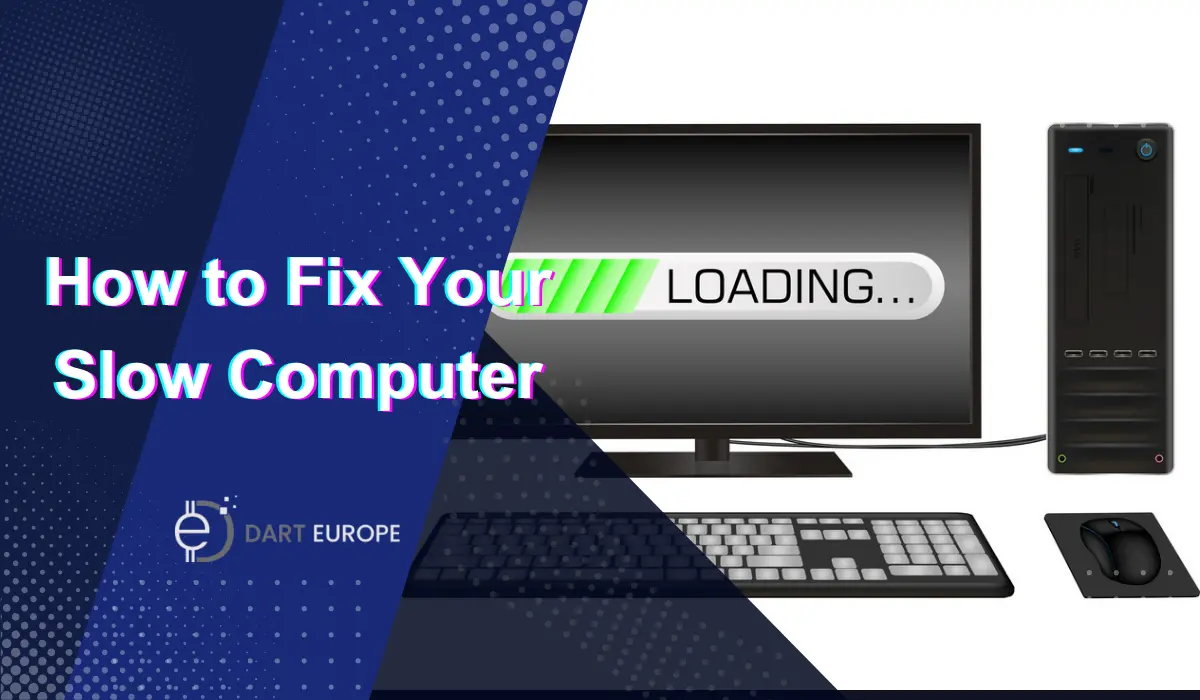A slow PC can be a frustrating experience, and the frustration increases if you are unable to identify what causes the lag. This article will provide you with the latest methods to identify and resolve your slow PC.
Why is My PC Slow?
A PC can slow down for multiple reasons, including software errors, insufficient space, numerous programs running in the background, malware, a pending upgrade, and hardware issues.
If all these issues are sorted out, other hidden issues, often overlooked during routine troubleshooting, can cause serious trouble. You need to identify the specific issue affecting performance.
How to Fix a Slow PC? Best Instant Solutions
Almost all the small issues can be fixed by certain instant solutions. If your PC’s sluggishness is caused by a surface-level issue, you can fix it through the following procedures.
Restart Your PC
A restart can clear temporary files and refresh your PC. It helps the PC cool down and ensures proper break and rest to all memory, CPU, registers, hard drive, video boards, audio, and network devices. Remember that a “Sleep Mode” is not technically a restart.
Update Your PC
If your Operating System and all the software inside it are up to date, it automatically increases the speed of your PC. A major advantage of an upgrade is the inclusion of the latest security patches that can protect your PC from brand-new malware. Also, update your outdated device drivers, if any.
Close Unnecessary Programs
Identify and close unnecessary programs and those running in the background to speed up your PC. If you are using Windows OS, you can access the Task Manager (Ctrl + Alt + Delete) to identify and terminate the programs taking up too much space. Once you reach the “Processes” tab, you can see those programs. You can also uninstall that software by visiting the “Uninstall a Program” section.
Disable Auto-Start
Sometimes, unwanted programs will open automatically when you turn your PC on. You can disable these autostart programs by visiting the “Startup Apps” section in the Task Manager. Ensure that you are disabling only the unwanted programs.
Fixing a Slow Computer by Solving Software Issues

Apart from disabling auto-start, terminating unnecessary programs, and updating your PC, you can employ the following software-based solutions to fix the delay.
Scan PC for Viruses
OS-based built-in scanning options can help you identify malware. In Windows, use “Windows Defender” to scan, or use trustworthy third-party antivirus software such as McAfee, Symantec, Kaspersky, or Avast. To run a virus scan with Windows Defender, follow the steps below.
- Access Windows Security and choose “Virus & threat protection.”
- To start the scan, tap “Quick Scan.”
- The scan will notify you if any threats are found, and you can remove them.
- Additionally, tap “Manage Settings” below to toggle between auto and manual scans and real-time protection.
Disk Check (CHKDSK)
Despite its time-consuming nature, an advanced disk checkup can find and repair system errors such as file system errors and bad sectors. Below are the detailed steps to do a disk check on Windows 10.
- First, open Command Prompt by pressing Windows key + X, or by searching “cmd”. Make sure you open it via “
- Type cmd (Command Prompt) in the Start menu search bar, then click Run as administrator.”
- In the Command Prompt, type “chkdsk /r” and tap the Enter key.
- Then, type “chkdsk /f” and press Enter.
- If the message “Chkdsk cannot run because the volume is in use by another process. Would you like to schedule this volume to be checked the next time the system restarts? (Y/N)” appears, tap “Y” and press Enter.
- Restart your PC to start the process. It will repair any system errors.
Install PC Cleaner
Various third-party cleaners can fix your software errors in a single click. Most of them are premium and come with a trial version. Search online, engage with reviews, and seek expert opinions to finalize a cleaner.
Fixing a Slow Computer by Solving Hardware Issues
Any hardware components can cause the PC to slow down, and the primary suspects include the Hard Disk (disk drive), RAM, and CPU (processor).
Fixing a Hard Disk
If the Disk Check and CleanUp weren’t helpful, you can physically repair your hard drive by visiting an expert. Hard Disks will slow down after years of prolonged usage. So, the best solution is to purchase a new disk and transfer all your files to it immediately. Recovering data from a dead hard disk is costly and cannot always be 100% successful.
Fixing the RAM
If software cleaning doesn’t help, check for loose connections and ensure proper installation of the RAM. If nothing works, consider upgrading your RAM by installing additional 4 GB or 8 GB Usually, a 64-bit Windows OS demands at least 8 GB of RAM for smooth operation.
Fixing the CPU
Check for dust buildup that can obstruct airflow, which causes the overheating of the CPU. If you are using the processor for a long time, a better solution to increase the speed is to remove the old CPU and install a new one.
You May Also Like: Samsung TV Plus Free Channels List 2025
Final Thoughts
By following the above steps, you can successfully enhance the performance of your slow PC. As a final note, always back up your important files to any cloud storage or a secondary memory to cope with the sudden freeze of the system.

